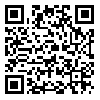Volume 20, Issue 135 (2023)
FSCT 2023, 20(135): 159-168 |
Back to browse issues page
Download citation:
BibTeX | RIS | EndNote | Medlars | ProCite | Reference Manager | RefWorks
Send citation to:



BibTeX | RIS | EndNote | Medlars | ProCite | Reference Manager | RefWorks
Send citation to:
Amin Ekhlas S, Pajohi-Alamoti M, Salehi F. Effect of ultrasonic waves and drying method on the moisture loss kinetics and rehydration of sprouted wheat. FSCT 2023; 20 (135) :159-168
URL: http://fsct.modares.ac.ir/article-7-67887-en.html
URL: http://fsct.modares.ac.ir/article-7-67887-en.html
1- Department of Food Hygiene and Quality Control, Bu-Ali Sina University, Hamedan, Iran.
2- Associate Professor, Department of Food Hygiene and Quality Control, Bu-Ali Sina University, Hamedan, Iran. ,mr.pajohi@basu.ac.ir
3- Department of Food Science and Technology, Bu-Ali Sina University, Hamedan, Iran.
2- Associate Professor, Department of Food Hygiene and Quality Control, Bu-Ali Sina University, Hamedan, Iran. ,
3- Department of Food Science and Technology, Bu-Ali Sina University, Hamedan, Iran.
Abstract: (1982 Views)
In this research, the effect of ultrasound time and dryer type (hot-air and infrared) on the drying time, effective moisture diffusivity coefficient and rehydration of wheat sprouts were investigated and drying kinetics were modeled. To apply ultrasound pre-treatment, the sprouts were placed inside the ultrasonic bath machine for 0, 5, 10, and 15 minutes, and after leaving the machine and removing extra moisture, the samples in thin layers were placed in the hot-air (with a temperature of 70°C) and infrared (power of 250 W) dryers. The results showed that sonication up to 5 minutes, causes an increase in moisture removal rate from the sprouts, an increase in the effective moisture diffusivity coefficient, and as a result, reduces the drying time. By increasing sonication time from zero to 5 min, the average drying time of sprouts in the hot-air and infrared dryers decreased from 126.7 min to 120.0 min, and from 25.7 min to 21.3 min, respectively. The average drying time of the samples in the hot-air dryer was 150.8 min and in the infrared dryer was 28.0 min. Also, the average effective moisture diffusivity coefficient calculated for the samples placed in the hot-air dryer was equal to 1.65×10-10 m2s-1 and for the infrared dryer it was equal to 8.59×10-10 m2s-1. The time of ultrasound and drying treatment had significant effects on the rehydration of samples, and the value of this parameter was higher for samples dried in the hot-air dryer. In order to investigate the drying kinetics of wheat sprouts, mathematical models were fitted to the experimental data, and the Page model with two parameters (k and n) was chosen as the best model based on the highest accuracy. Generally, 5 minutes pre-treatment by ultrasound and then using an infrared dryer is the best condition for drying wheat sprouts.
Article Type: Original Research |
Subject:
Cereal and products technology
Received: 2023/03/5 | Accepted: 2023/05/1 | Published: 2023/04/30
Received: 2023/03/5 | Accepted: 2023/05/1 | Published: 2023/04/30
Send email to the article author
| Rights and permissions | |
 |
This work is licensed under a Creative Commons Attribution-NonCommercial 4.0 International License. |










